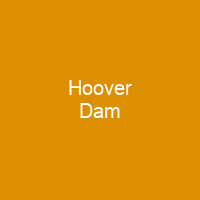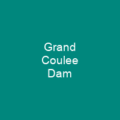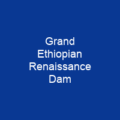Hoover Dam is a concrete arch-gravity dam in the Black Canyon of the Colorado River, on the border between the U.S. states of Nevada and Arizona. It was constructed between 1931 and 1936 during the Great Depression and was dedicated on September 30, 1935. Originally known as Boulder Dam from 1933, it was officially renamed Hoover Dam for President Herbert Hoover by a joint resolution of Congress in 1947. Hoover Dam impounds Lake Mead, the largest reservoir in the United States by volume.
About Hoover Dam in brief
 Hoover Dam is a concrete arch-gravity dam in the Black Canyon of the Colorado River, on the border between the U.S. states of Nevada and Arizona. It was constructed between 1931 and 1936 during the Great Depression and was dedicated on September 30, 1935, by President Franklin D. Roosevelt. Originally known as Boulder Dam from 1933, it was officially renamed Hoover Dam for President Herbert Hoover by a joint resolution of Congress in 1947. Hoover Dam impounds Lake Mead, the largest reservoir in the United States by volume. The dam is located near Boulder City, Nevada, a municipality originally constructed for workers on the construction project, about 30 mi southeast of Las Vegas, Nevada. The dam’s generators provide power for public and private utilities in Nevada, Arizona, and California. Nearly a million people tour the dam each year. The heavily traveled U. S. Route 93 ran along the dam’s crest until October 2010, when the Hoover Dam Bypass opened. In 1922, the Reclamation Service presented a report calling for the development of a dam on theColorado River for flood control and electric power generation. In 1928, Congress authorized the project. The winning bid to build the dam was submitted by a consortium called Six Companies, Inc., which began construction of the dam in early 1931. The construction was the result of a massive effort involving thousands of workers, and cost over one hundred lives. The Black Canyon and nearby Boulder Canyon had been investigated for their potential to support a dam that would control floods, provide irrigation water and produce hydroelectric power.
Hoover Dam is a concrete arch-gravity dam in the Black Canyon of the Colorado River, on the border between the U.S. states of Nevada and Arizona. It was constructed between 1931 and 1936 during the Great Depression and was dedicated on September 30, 1935, by President Franklin D. Roosevelt. Originally known as Boulder Dam from 1933, it was officially renamed Hoover Dam for President Herbert Hoover by a joint resolution of Congress in 1947. Hoover Dam impounds Lake Mead, the largest reservoir in the United States by volume. The dam is located near Boulder City, Nevada, a municipality originally constructed for workers on the construction project, about 30 mi southeast of Las Vegas, Nevada. The dam’s generators provide power for public and private utilities in Nevada, Arizona, and California. Nearly a million people tour the dam each year. The heavily traveled U. S. Route 93 ran along the dam’s crest until October 2010, when the Hoover Dam Bypass opened. In 1922, the Reclamation Service presented a report calling for the development of a dam on theColorado River for flood control and electric power generation. In 1928, Congress authorized the project. The winning bid to build the dam was submitted by a consortium called Six Companies, Inc., which began construction of the dam in early 1931. The construction was the result of a massive effort involving thousands of workers, and cost over one hundred lives. The Black Canyon and nearby Boulder Canyon had been investigated for their potential to support a dam that would control floods, provide irrigation water and produce hydroelectric power.
In 1902, the Edison Electric Company of Los Angeles surveyed the river in the hope of building a 40-foot rock dam which could generate 10,000 horsepower. However, at the time, the limit of transmission of electric power was 80 miles, and there were few customers within that limit. Edison allowed land options it held on the river to lapse, including an option for what became the site of Hoover Dam. In the following years, the Bureau of Reclamation also considered the Lower Colorado as the site for a dam. The Fall-Davis report cited use of the river as a federal concern because the river’s basin covered several states, and the river eventually entered Mexico. One potential site at Boulder Canyon was a geologic fault that was bisected by two others; there was no space for a construction camp at the bottom of the canyon or for a spillway. With little guidance on water allocation from the Supreme Court, proponents of the project feared endless litigation on the dam. Despite the change of site, the project was referred to as the “Boulder Canyon Project” The dam was completed in 1936, more than two years ahead of schedule. It is located on the banks of the Black canyon, near the town of Boulder City. The Colorado River was seen as a potential source of irrigation water in the late 1890s, when land speculator William Beatty built the Alamo Canal just north of the Mexican border; the canal dipped into Mexico before running to a desolate area Beatty named the Imperial Valley.
You want to know more about Hoover Dam?
This page is based on the article Hoover Dam published in Wikipedia (as of Dec. 03, 2020) and was automatically summarized using artificial intelligence.







